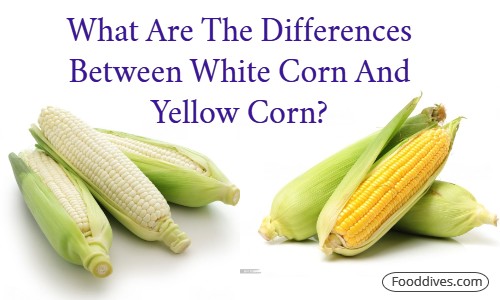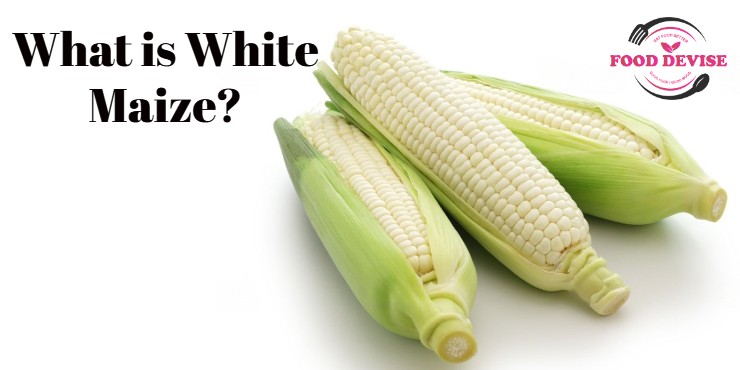Maize, also known as corn, is a widely consumed staple crop across the world, and white maize is a variety of maize that is widely grown and consumed in various cultures. White maize is an important crop in many countries, especially in Africa, where it is a dietary staple for millions of people.
What is White Maize? White maize is a type of maize that has a white kernel, which sets it apart from other varieties such as yellow or multicolored maize. For its white color, it is called white maize.
In this article, we will explore many more things about this, including its characteristics, culinary uses, economic and agricultural importance, and the challenges and controversies surrounding it. So, let’s start knowing them.
What is White Maize?
White maize is a variety of maize, also known as corn, that has a white kernel. It is one of the most widely consumed staple crops in the world and is an important dietary staple for millions of people, particularly in sub-Saharan Africa and Latin America.
This is known for its high starch content, which makes it a valuable source of energy, as well as its nutritional composition, which includes high levels of fiber, vitamins, and minerals such as vitamin A and zinc.
Characteristics of White Maize
White maize is a type of maize that has a white kernel, which sets it apart from other varieties such as yellow or multicolored maize. The kernels of this are generally round and smooth, with a slightly dentated top. They are slightly larger than yellow maize kernels, and their texture is somewhat softer. This is known for its high starch content, which makes it a valuable source of energy.
White maize is also known for its nutritional composition, as it is rich in fiber, vitamins, and minerals. It contains high levels of vitamin A and zinc, which are essential for good health. The high fiber content of it is important for digestive health, and it can help reduce the risk of chronic diseases such as heart disease, diabetes, and obesity.
Culinary Uses of White Maize
White maize is used in a wide variety of culinary dishes across the world. It is a staple ingredient in many traditional dishes, such as tortillas, tamales, and polenta. In many cultures, it is ground into flour and used to make porridges, bread, and other baked goods. It is also used as an ingredient in beer and other fermented drinks.
Compared to other types of maize, white maize has a milder flavor and is more versatile in cooking. It can be used in both savory and sweet dishes, and its neutral flavor allows it to pair well with a wide variety of ingredients.
What Are The Differences Between White Corn And Yellow Corn?

White corn and yellow corn are two common varieties of corn, each with its own unique characteristics. Here are some of the main differences between white corn and yellow corn:
- Color: As the names suggest, the primary difference between white corn and yellow corn is their color. White corn has a white or creamy-colored kernel, while yellow corn has a deep yellow or golden kernel.
- Flavor: White corn is known for its mild, slightly sweet flavor, while yellow corn has a stronger, more distinct flavor. This is due in part to the fact that yellow corn contains more carotenoids than white corn, which gives it its yellow color and contributes to its flavor.
- Texture: White corn kernels are generally softer and more tender than yellow corn kernels. Which can be slightly tougher and more chewy.
- Nutritional Composition: While both white corn and yellow corn are nutritious, they differ slightly in their nutritional composition. Yellow corn contains more carotenoids, which are antioxidants that can help protect against chronic diseases. While white corn contains more anthocyanins, which are also antioxidants that can help protect against inflammation and oxidative stress.
- Culinary Uses: White corn and yellow corn can be used interchangeably in most recipes. But their flavor and color differences can affect the final outcome of a dish. For example, white corn may be preferred for dishes that require a milder flavor or a lighter color. While yellow corn may be preferred for dishes that require a more robust flavor or a deeper color.
In summary, white corn and yellow corn have differences in color, flavor, texture, nutritional composition, and culinary uses. But both are nutritious and versatile ingredients that can be used in a wide variety of dishes.
Conclusion
White maize is a widely consumed staple crop that plays an important role in global food security and nutrition. Its nutritional composition, culinary versatility, and economic significance make it a valuable crop in many cultures.
However, challenges such as climate change and controversies surrounding GMOs highlight the need for continued research and innovation to ensure the sustainability and safety of its production.

Hello, my name is Lora J Fusco, and I am a passionate chef with a wealth of experience in the culinary world. I am not in the kitchen making meals. I love to share my insights and adventures by writing on my blog.
Food and cooking are not just my job but also my passion. I am thrilled to have the chance to connect with you through my writing. Welcome to my space, and I hope you enjoy exploring the wonderful world of food with me!

